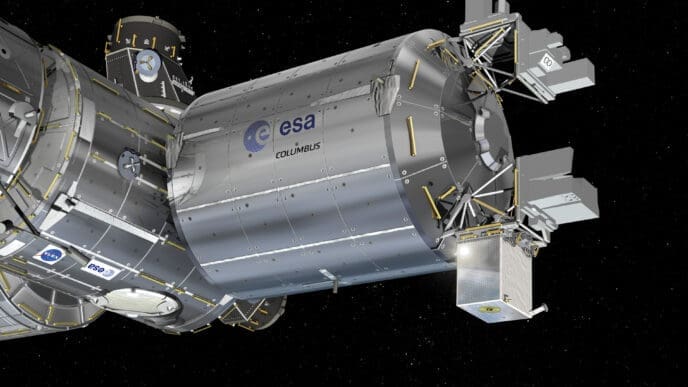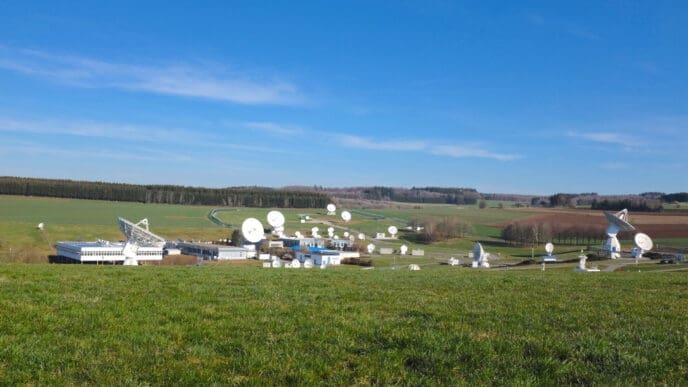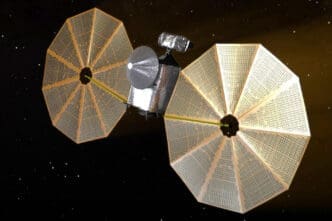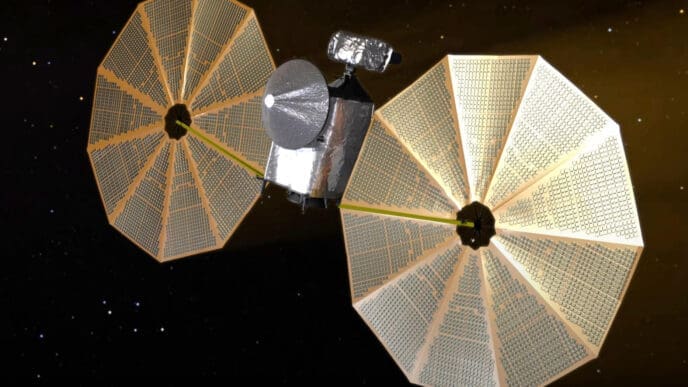In a groundbreaking development set to reshape global surveillance, China has unveiled a powerful satellite system capable of capturing human facial expressions from orbit. This achievement marks a significant leap in remote sensing technology, casting a spotlight on China’s rapid advancements in space exploration and raising important questions about privacy and international security. As global powers adapt to these new capabilities, the implications for international relations and personal privacy are profound, heralding a new era in surveillance and intelligence gathering.
Revolutionary Satellite Technology Transforms Surveillance Capabilities
China’s latest satellite technology establishes a new standard in surveillance, enabling unprecedented facial recognition from orbit. Detailed in the Chinese Journal of Lasers in February 2025, this technological feat showcases the ability to discern facial expressions from hundreds of kilometers away. At the core of this advancement is synthetic aperture lidar (SAL), an innovative laser radar technology that produces high-resolution images through shorter optical wavelengths, surpassing the clarity of previous microwave-based systems.
Testing at Lake Qinghai demonstrated the satellite’s ability to detect details as small as 1.7 millimeters, with a precision of 15.6 millimeters from a distance of 101.8 kilometers. Such precision enables unprecedented monitoring of foreign satellites, potentially heightening tensions between China and the United States. This remarkable capability underscores the innovative spirit and technological prowess of Chinese scientists as they continue to push the boundaries of space surveillance.
Technical Innovations Behind China’s Space Surveillance Breakthrough
The development of this satellite technology is rooted in significant technical innovations, particularly the use of a 4×4 microlens array to split the lidar system’s laser beam. This novel approach expands the optical aperture, overcoming traditional constraints related to field of view and aperture size. By tackling these limitations, Chinese engineers have achieved a level of detail and precision previously unattainable in space-based surveillance systems.
While the tests at Lake Qinghai occurred under ideal conditions, it is important to note that adverse weather could impact the system’s performance. Nonetheless, the successful trials highlight China’s growing capabilities in space-based technologies. This advancement is part of China’s broader technological expansion, including substantial investments in nuclear fusion research and ambitious infrastructure projects. Despite some challenges, China’s progress in space surveillance underscores its commitment to maintaining a competitive edge in global technological advancements.
Global Implications of Advanced Space Surveillance
The emergence of such powerful surveillance technology necessitates a reevaluation of global privacy norms, security dynamics, and intelligence-gathering practices. The ability to observe facial expressions from space signifies a paradigm shift that could transform international espionage. As countries like China develop increasingly sophisticated surveillance tools, traditional concepts of privacy and secrecy are being redefined, prompting others to adapt their security measures accordingly.
The proliferation of advanced surveillance technologies extends beyond military applications, influencing how information is collected and disseminated worldwide. As communities globally leverage technology for economic progress, these advancements present both opportunities and challenges. They necessitate a reevaluation of how societies manage privacy and security in an era of pervasive monitoring. China’s satellite technology is not merely a scientific achievement but a precursor to how space-based technologies will shape global power dynamics and our understanding of surveillance in the decades to come.
Future of Surveillance and International Relations
As China propels forward with its advanced satellite technology, the future of surveillance and international relations becomes increasingly complex. The ability to monitor facial expressions from space represents a significant leap in technological capability, likely to influence geopolitical strategies and security policies worldwide. As countries grapple with the implications of such advancements, the balance of power may shift, leading to new alliances and rivalries.
Moreover, the ethical considerations surrounding privacy and surveillance are more pertinent than ever. As technology evolves, societies must navigate the delicate balance between security and civil liberties. China’s satellite development serves as a reminder of the rapid pace of technological change and the need for international collaboration and dialogue to address the challenges these innovations present. How will global leaders respond to the evolving landscape of surveillance technology, and what measures will be taken to ensure a secure yet free global society?
The Ripple Effect: Global Implications of China’s Surveillance Leap
- Civil Liberties Debate: The new capabilities may ignite debates on civil liberties and the extent of government surveillance, influencing public policy and societal norms.
- Privacy Concerns: The ability to capture facial expressions from space could lead to heightened concerns about personal privacy, prompting calls for stronger data protection laws globally.
- International Relations: This technological leap may escalate tensions, particularly between China and other global powers like the United States, as nations reassess their intelligence strategies.
- Economic Opportunities: Advanced surveillance technology may open new markets and applications, driving economic growth in sectors like security, telecommunications, and data analytics.
- Policy Adaptation: Governments worldwide may need to revise surveillance policies and international treaties to address the ethical and security challenges posed by such innovations.
- Technological Race: The advancement is likely to spur a technological race, encouraging other nations to accelerate their own research and development in space surveillance.












